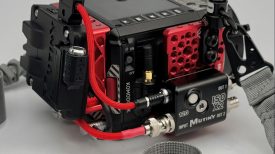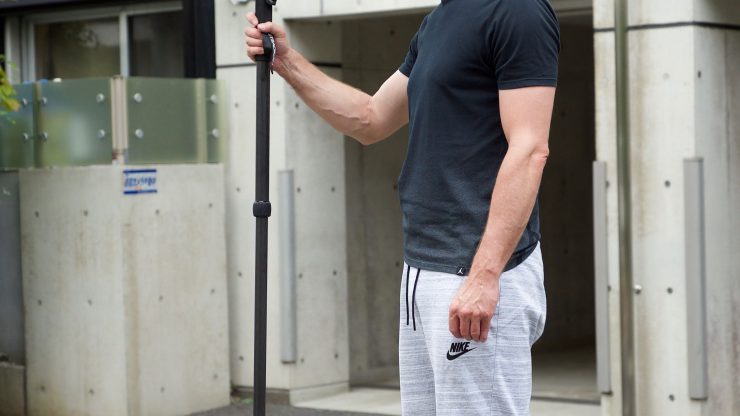
To be honest I have never been a big fan of monopods. I have found most of them to be awkward to operate, and I couldn’t use them with a decent sized camera package. There really wasn’t anything on the market in the way of a monopod that could handle large and heavy digital cinema cameras. That is until the Steadicam Air 25 came along.
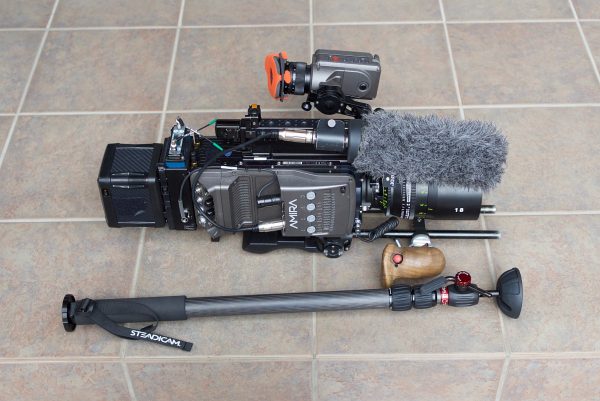
What sets the Steadicam Air apart from any other monopod is that it’s gas lift and spring activated. It also weighs just 3.5 lbs (1.58kg) as it’s made out of carbon fiber, but it can handle camera payloads of up to 25lb (11.33kg). To put that weight into perspective you could use an Arri Amira, with a top handle, v-lock battery, dual radio mic receiver, top mic and a Tokina 18mm T1.5 Vista Cinema lens (10.1kg total weight) with no problem at all.
Simple but clever design
The Steadicam Air is made up of three sections including one twist leg lock that allows for 360-degrees of rotation.
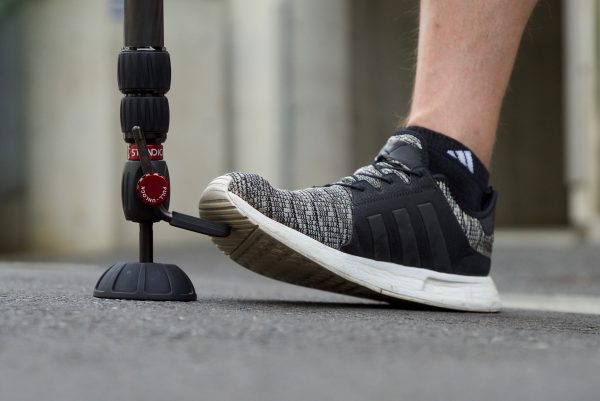
The height adjustment is activated by the rubberized foot pedal. This allows you to raise and lower the height of the monopod from 28″ (71.12 cm) to 62.5″ (158.75 cm). This height adjustment offers 34.5″ (87.63 cm ) of adjustment.
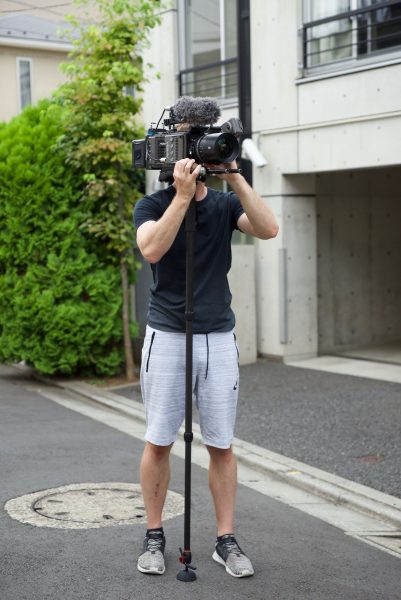
The maximum height of 158.75 cm combined with the height of a digital cinema camera puts it in a really nice position for operating your camera, even if you happen to be tall like me.
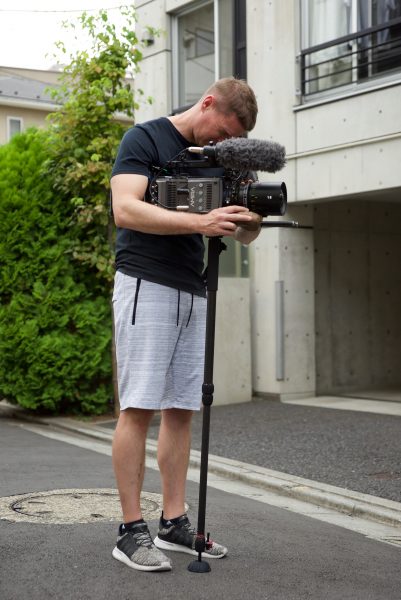
Even without lifting the second stage, you can put the camera in a really comfortable spot for operating.
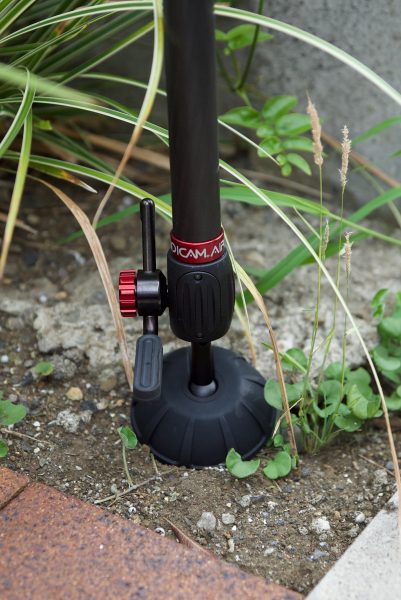
The leg-stand looks a little bit like a suction cup mount, and just like a suction cup, it’s designed to provide a lot of grip no matter what type of surface you are working on.
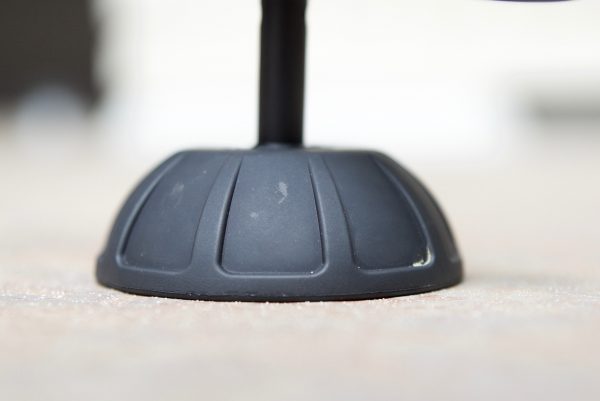
I found that it didn’t slide around or move and I tried it on all sorts of surfaces from wood, to concrete, to shiny tiles and even on a wet floor.
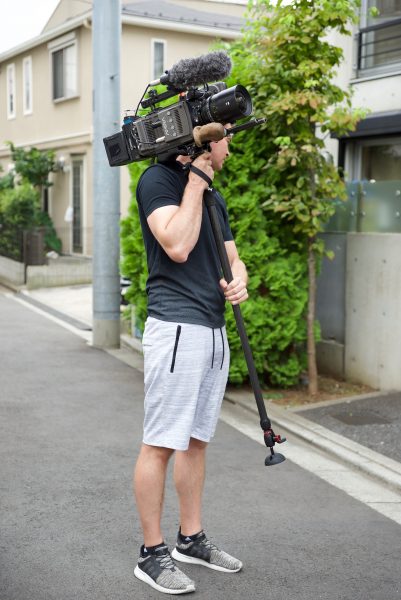
The only negative aspect to the gas operated pedal is that you can’t adjust the height if you pick up and carry the monopod and camera. Some shooter like to adjust the height of their tripod or monopod while they are carrying it, but unfortunately, with the pedal, you need to place it on a flat surface to be able to make adjustments. I really didn’t find this to be a problem when I was using the Air 25.
Why use a monopod with a large digital cinema camera?

A monopod has probably never even crossed your mind if you own a large digital cinema camera. There is also a good chance that you dismissed monopods as being something photographers of wedding videographers used. The Steadicam Air 25 might change your misconceptions about monopods, it certainly did mine.
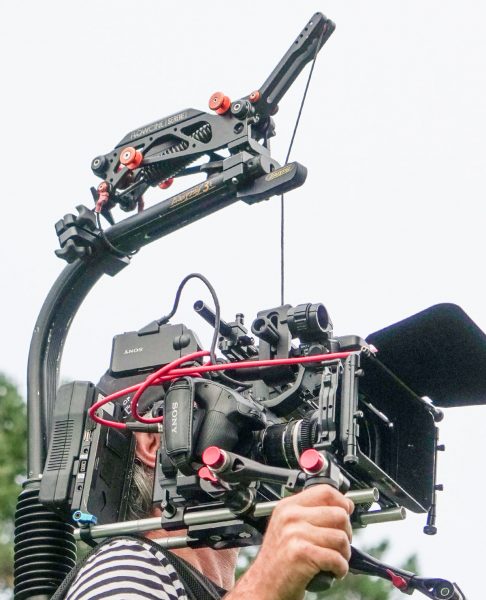
When using heavy digital cinema cameras you were either forced to throw it on your shoulder if you wanted to go handheld or use something like an Easyrig. There is nothing wrong with putting a camera on your shoulder and certain cameras, such as the ARRI AMIRA, Canon C700, and Panasonic Varicam 35/LT make this easy to do. The problem is if you have to go handheld for long periods of time, the weight of the camera is going to be a problem. It’s not only going to be uncomfortable but long term it’s very bad for your back.
The other option I mentioned is to use an Easyrig, and while that is a great solution, you are still bearing the weight of the camera (even if it isn’t your shoulders or back). The other downside is that they are expensive and not always practical to use.
Look, it’s not an Easyrig replacement, but more of an alternative solution that allows you to do a similar thing, albeit in a different way.
The beauty of the Steadicam Air 25 is that it’s cheap, lightweight and doesn’t put any of the weight through your body. For those times when you need to move quickly or want a handheld look without having to resort to an Easyrig or putting the camera on your shoulder the Steadicam Air 25 makes a lot of sense.
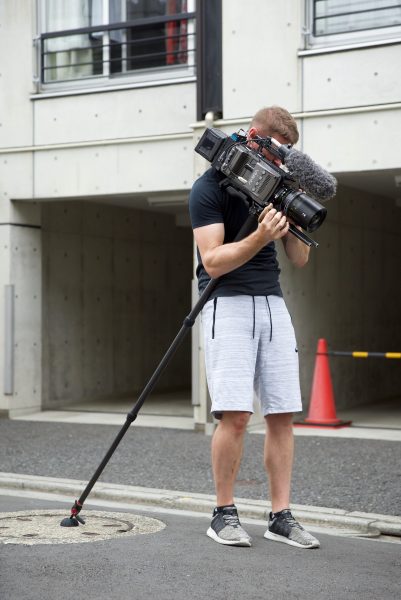
The design of the monopod stand actually allows you to create some pretty creative shots due to its flexibility. As the ballpoint head can move around, you can tilt the monopod forwards or backwards to create defacto jib style shots.
If you thought monopods weren’t used in very professional environments then think again. The production crew on CBS’s TV show “S.W.A.T” has been using the Steadicam Air 25 with Panavision Millennium DXL camera packages.
Build quality
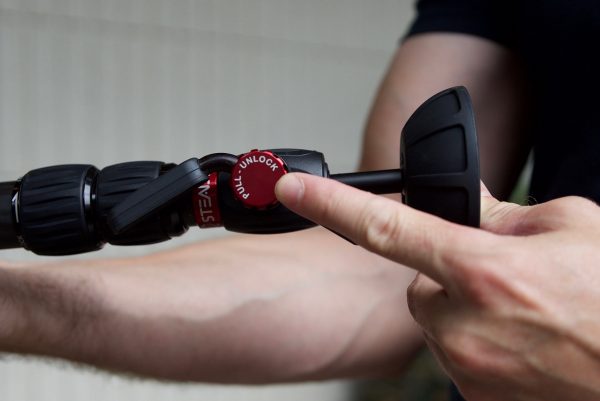
As I mentioned earlier the Steadicam Air 25 is made of a carbon fiber and anodized aluminum components. The overall finish and construction of the monopod are in line with other products from Steadicam and it doesn’t disappoint.
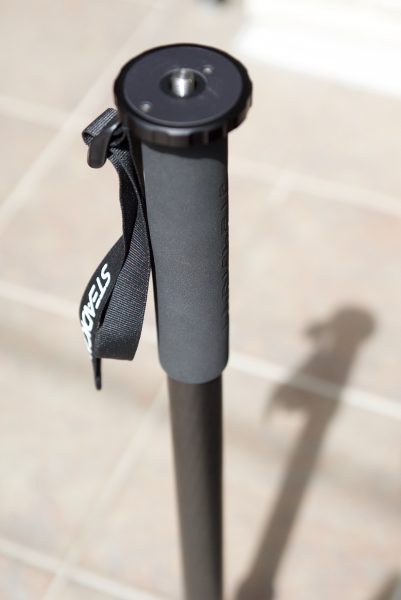
The padded handgrip at the top of the Air 25 is a welcome addition because as we all know carbon fiber becomes extremely slippery when it gets wet. By putting this padded handgrip on the Air 25 it makes it very easy to hold onto the monopod and also provides a stable grip for picking up your camera.
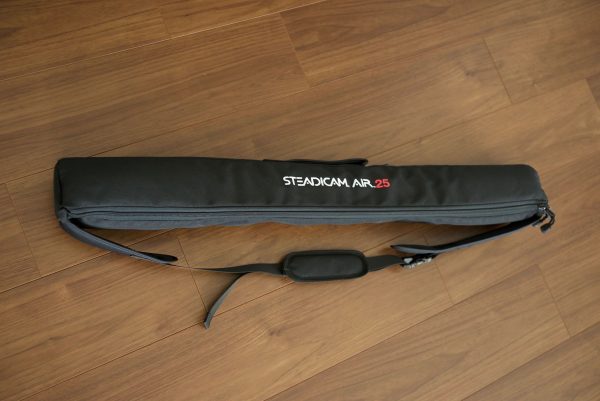
The Steadicam Air 25 comes in a nice travel case with a strap, and I found I could just put it in my normal tripod bag so I always had the option of using either the monopod or a tripod depending on what the situation called for.
Like any tripod or monopod, you should not lay the Steadicam Air 25 down on the sand or get sand inside it. You can operate it on the beach, but it is recommended that wipe any sand off to avoid it getting inside the monopod. Operating the monopod in the rain is not an issue, but you really shouldn’t submerge it in water.
What can you put on top of the Steadicam Air 25?
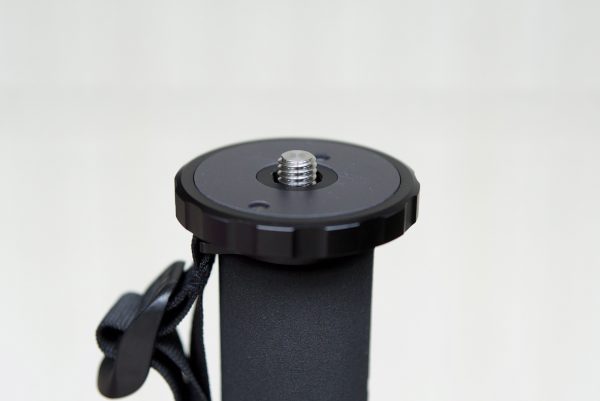
At the top of the Air 25, there is a removable aluminum top plate that has a reversible screw for both 1/4″-20 or 3/8″-16 thread cameras and accessories. This allows you to mount just about anything to it.
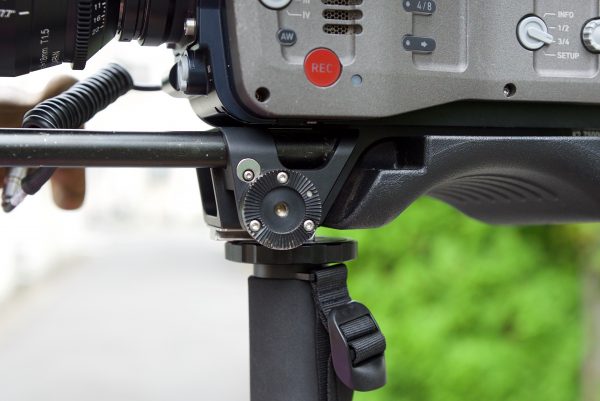
I found that with an ARRI Amira it was easy enough to just screw it straight into the WPA-1 Wedge Plate Adapter on my camera. This is super quick and easy to do and it means I can go from handheld to tripod to monopod all very easily.
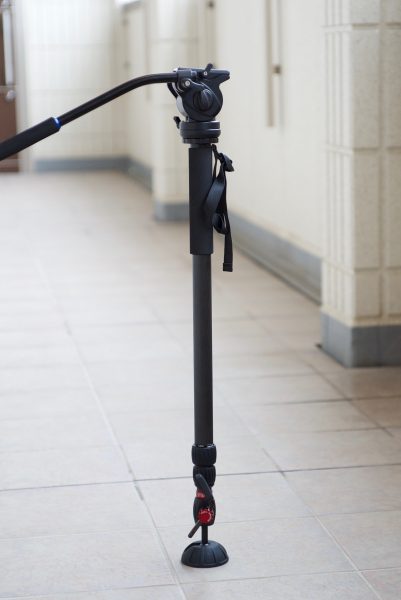
If you prefer you can attach a flat base tripod head which also works quite well. This increases the versatility of the Air 25, but you do need to factor in the weight of whatever head you happen to be using.
Is it smooth?
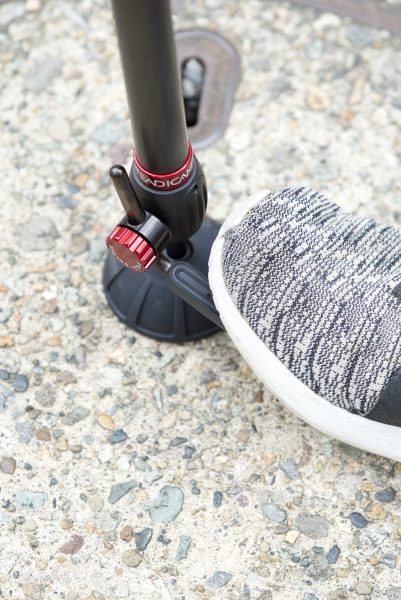
The movement up is pretty smooth but it does come to a stop when it reaches its maximum height or you take your foot off the pedal. The speed can be controlled by depressing the foot pedal, if you press lightly it goes slow, if you press harder it goes faster. The action you make with the foot pedal is very reminiscent of pressing down on a car accelerator pedal and it has the exact same effect. It really didn’t take me long to get the hang of it and I found that the foot pedal system was easy to use.
Making the Air 25 go down is slightly different from the way it goes up. Not only do you have to press down on the foot pedal but you also need to push down on your camera. The heavier the camera, the easier this is to do due to gravity. You may well find it isn’t as smooth with lighter camera rigs and it will also be harder to push down.
Real world use
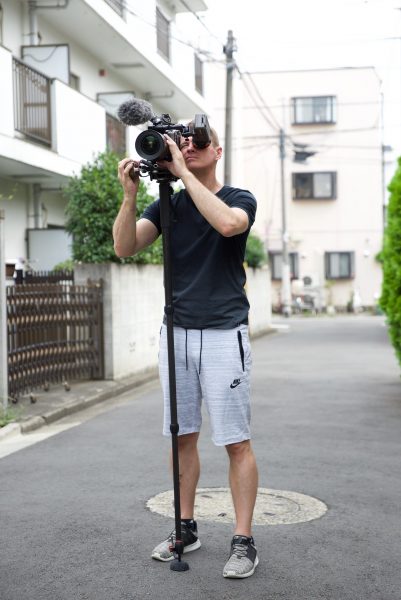
I was actually surprised by just how much I like the Steadicam Air 25. When I decided to buy it I wasn’t sure what to expect, and I had a niggling feeling that I may end up being one of those pieces of kit I regret buying. As it turns out, it’s actually one of the best purchases I ever made and probably one of the most useful products I have ever reviewed.
Being able to be mobile and still get steady shots without putting large amounts of strain on my back and shoulders is a breath of fresh air. At the end of the day, the Steadicam Air 25 lets me get shots which still have that handheld sort of feel without putting additional stress on my body. After being a cameraman for 28 years, any chance you can get to make your job easier you take.
The gas pedal is super simple to operate and changing the height of your monopod can be done quickly and with no strain.
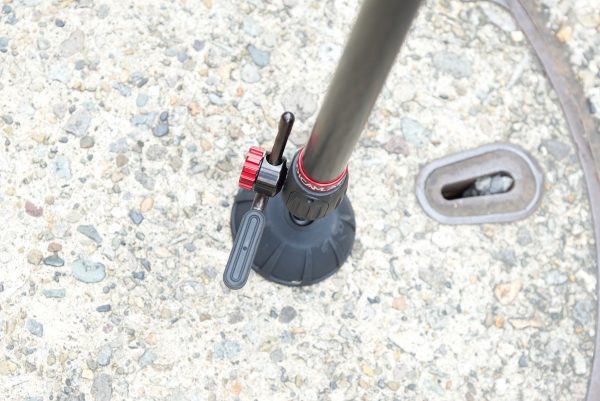
The Air 25 is a joy to use and most importantly it’s easy to use. There are, however, some caveats you need to be aware of. Because the leg-stand is designed to move around on an angle, if you are trying to do a pan, it’s difficult to keep your horizon level.
MC4 (Master Cinematographers 4) who came up with the original idea for the Steadicam Air and collaborated with Tiffen are already working on a solution for horizon correction. MC4 which consists of Jarred Land, president of RED Digital Cinema, Francis Kenny, ASC, Richard Crudo, ASC, and Sallyanne Massimini, DGA and this time have teamed up with Wild Iron to make the “Squish” head for monopods. This allows for horizon correction when using a monopod. The “Squish” will be available sometime soon.
The other problem is that because it is a monopod, you can’t just simply leave it standing up (because it will fall over), and you can’t really put it down without the side of the camera resting against the ground. These are things you do need to consider when you use it. In saying that it is relatively quick to take the camera off the monopod if you do need to put your camera down on the ground.
Competition
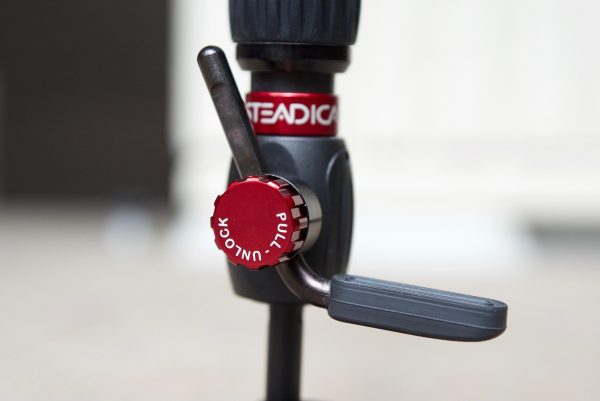
Because of its unique design and payload capacity, the Steadicam Air 25 ($499 USD) doesn’t really have any direct competitors. But you do need to remember that it’s expensive as far as monopods are concerned. The closest monopod options would probably be the Manfrotto MVMXPRO500US XPRO Aluminum Video Monopod ($276.19 USD), the Libec HFMP monopod ($159 USD) and the iFootage Cobra II A-180 monopod ($166 USD).
Manfrotto MVMXPRO500US XPRO
Weight: 4.6 lb (2.1 kg)
Payload capacity: 11 lb (5 kg)
Maximum height: 79.9″ (203 cm)
Libec HFMP monopod
Weight: 4 lb (1.8 kg)
Payload capacity: 17.6 lb (8 kg)
Maximum height: 69.3″ (176 cm)
iFootage Cobra II A-180
Weight: 3.32 lb (1.51 kg)
Payload capacity: 17.6 lb (8 kg)
Maximum height: 70.86″ (180 cm)
The Steadicam Air 25 retails for $499 USD. Another version called the Steadicam Air-15 is $399 USD.
Features:
- 100% gas lift, spring activated height adjustable monopod – activated by an adjustable foot pedal
- Made of Lightweight Carbon Fiber
- 3 – Section Monopod with 1 – twist leg lock
- Allows for full 360-degree rotation
- Ergonomic foam padded grip point
- Removable aluminum top plate with reversible screw thread allowing for 1/4in-20 and 3/8in-16
- Oversized rubber foot that connects to the ballpoint
- Quick twist rubberized leg grips
- Non-slip, rubberized foot pedal allows for easy grip operation. The pedal also folds up with travel purposes and quick transport
- Collapsed Height = 28″ (71.12 cm)
- Fully Extended Height = 62.5″ (158.75 cm)
The Tiffen Steadicam Air includes a 1-year limited warranty.
Is it worth the premium price Tiffen is asking?
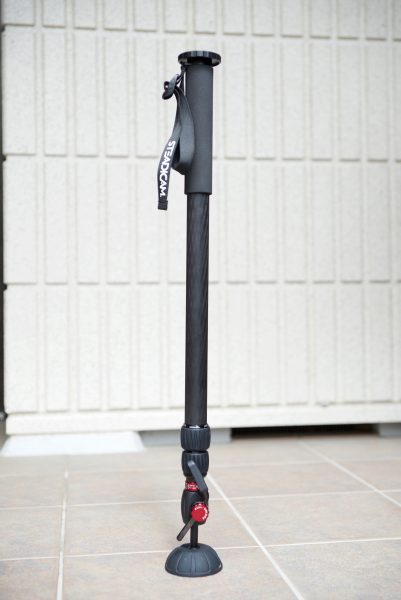
At $499 USD the Steadicam Air 25 is expensive as far as monopods are concerned. Most other monopod options on the market are considerably cheaper. The problem is, none of them offer the gas pedal operation and none of them have anywhere near the payload capacity. For me personally, the $499 USD is well worth the asking price. If you don’t use a heavy digital cinema camera then the Steadicam Air 15 ($399 USD) is probably a better option.
Conclusion
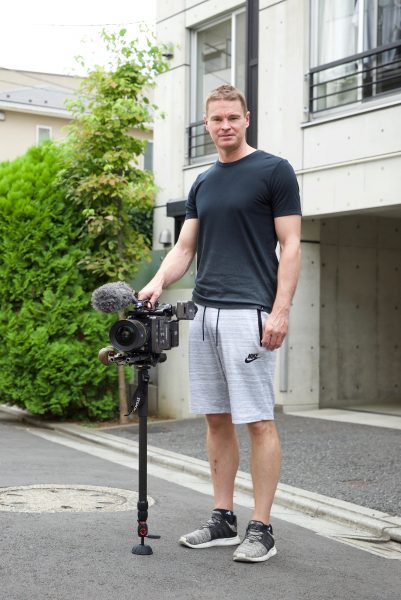
As I mentioned earlier in the review, I love the Steadicam Air 25, and it really is one of those products that until you actually use it you don’t know how good it is. After doing several shoots with the Air 25 I wonder how I ever did without it. It’s quick, easy and effortless to use and most importantly it saves wear and tear on your body.
If you own a larger digital cinema camera such as an Amira, Varicam LT, Alexa, Canon C700, or even something like a C300 Mark II, FS7 or Blackmagic URSA Mini Pro you really should consider looking at the Steadicam Air 25 especially if you do a lot of solo shooting.








